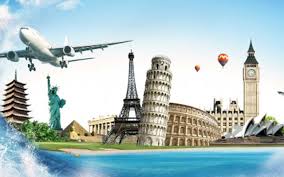The Global Business Travel Association (GBTA) has unveiled a new study, the “GBTA U.S. Economic Impact Study: Business Travel’s Impact on Jobs and the U.S. Economy,” which quantifies the significant economic impact of traveling for work in the U.S.
The report shows the business travel industry provided a major boost to the U.S. economy in 2022, the latest full year for which a complete set of data is available for analysis.
The U.S. was the nation that spent the most on business travel in 2022, with expenditures totalling USD 421.1 billion and resulting in USD 119 billion in tax receipts. It also supported 6 million jobs and represented 3.5% of total employment. GBTA’s economic impact study also shows that for every dollar spent on business travel, USD 1.15 was returned to the U.S. economy as net-new gross domestic product (GDP).
Additionally, of the direct jobs supported by business travel, 38% were in food services, 19% in accommodations and 11% in transportation and warehousing. The study also includes profiles of U.S. business travellers to better understand their characteristics, behaviour, motivations and spending patterns.
The study methodology estimates total annual business travel spending in the U.S. in 2022 and uses a standard economic model to translate business travel spending into its impact on GDP, jobs, wages and taxes.
The U.S. is anticipated to be a top one or two market worldwide for spending again in 2024, according to GBTA’s latest industry forecast2. Although final data is not yet available beyond 2022, estimates from GBTA’s latest Global Business Travel Index (BTI) point to U.S. business travel spending for 2023 to increase around 7% above 2019 totals, indicating a robust recovery for the industry. On a global basis similar growth is expected, with business travel spending anticipated to surpass USD 1.5 trillion in 2024.
“The data shows that business travel is a substantial contributor to the health of the U.S. economy, and therefore also a key driver for the global economy,” said Suzanne Neufang, CEO, GBTA. “Business travel supports millions of jobs and delivers billions in tax revenue, which is why it is important for policy-makers to consider the impact on the industry when devising economic policies – and for sustainable solutions to be prioritized, funded and developed to help us abate travel’s hardest-to-abate sectors.”
Additional study highlights for U.S. business travel in 2022 include:
• A total of 429.9 million business trips were taken within the U.S.
• An estimated 67% of trips were taken for transient purposes: sales, client service, government and military travel, and travel for construction or repair. The remaining 33% represents conference and event travel.
• Business travellers are traveling longer for each trip: 4.1 days in 2022 (versus 3.3 days as cited in 2017 GBTA research).
• The amount spent per business trip averaged USD 632, with 34% spent on lodging (USD 214), representing the largest single category for spending.
• The average age of U.S. business travellers is 44.3 years.
• One-third (33.9%) have an annual household income below USD 50,000 and 31.5% above D 100,000, with the remaining third falling in between.
• Blended travel − where business and leisure trips are combined − made up over a third of all travel (33.8%). Travelers stay for 4.4 days on average during “bleisure” trips, and although men were more likely to travel for business overall, proportionally, women added a leisure component to their business travel at a much higher rate than men in 2022.
• The top 15 states ranked by overall business travel destination spending accounted for 65% of total U.S. business travel expenditures (in descending order):
1. California
2. New York
3. Florida
4. Texas
5. Georgia
6. Illinois
7. Colorado
8. Pennsylvania
9. New Jersey






